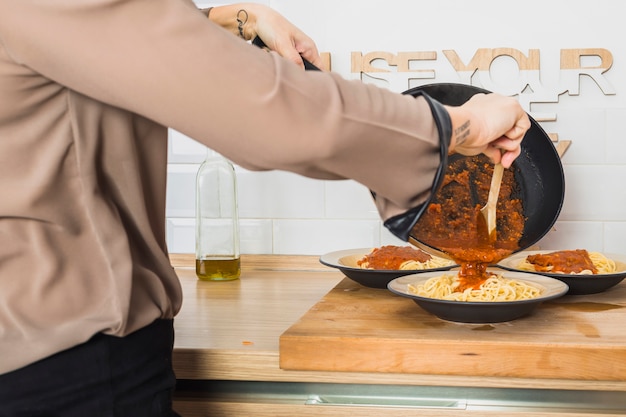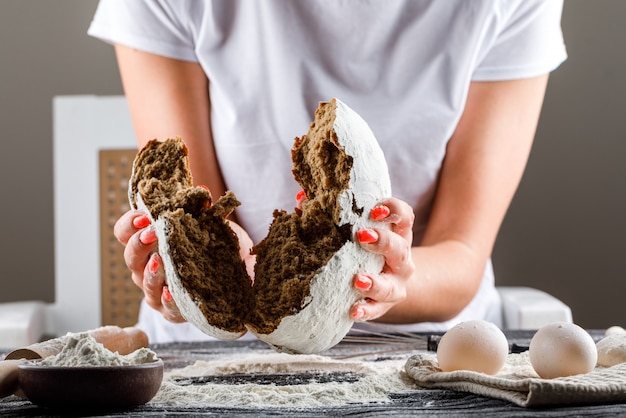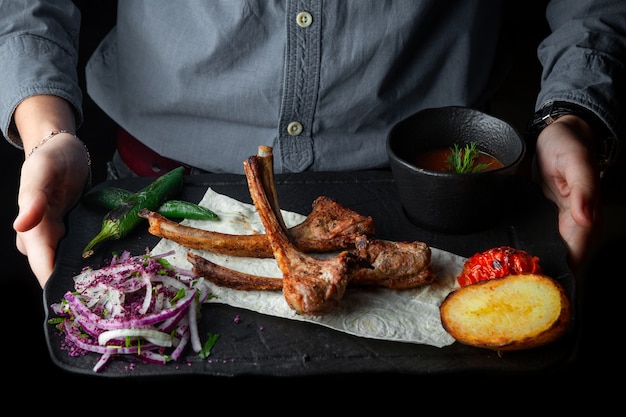Let's talk venison, folks! As a keen hunter and a passionate home cook, I've always been a big fan of wild game, and deer backstrap is a real favourite. It's a cut that's lean, tender, and full of flavour – truly a gift from the wild. And the best part? It's incredibly versatile. Over the years, I've cooked it in countless ways, from classic pan-searing to smoky BBQ, and I'm here to share some of my favourites with you.
This article is your guide to unlocking the culinary potential of deer backstrap. We'll delve into the basics of preparing this prized cut, explore a variety of cooking methods, and even get into some delicious recipe ideas. I'll also be sharing some personal tips and tricks, those little nuggets of wisdom I've picked up along the way – things like how to tell if your venison is perfectly cooked, how to tackle tough cuts, and what to do with any leftovers. So, grab your apron, get ready for some culinary adventures, and let's get started!
Part 1: Preparing the Backstrap: A Foundation for Flavor

Before we jump into cooking, let's talk about the star of the show – the deer backstrap. It's the most tender cut on the deer, prized for its lean, delicate texture and rich, gamey flavour. Here's how to get it ready for cooking.
Cleaning and Trimming: A Clean Slate
The first step is cleaning and trimming the backstrap. Now, I always get my venison from trusted sources, either a local butcher or a hunting buddy who knows their way around a rifle! Once you've got your backstrap, give it a good rinse under cold running water. Pat it dry with paper towels.
Now, it's time to remove any excess fat or silver skin. This stuff can be tough and chewy, so we want to get rid of it. You can do this with a sharp knife or your fingers. For a more polished look, you can trim the backstrap into even strips, but I usually leave it whole.
Marinating and Rubbing: Layering in Flavor
Now comes the fun part – adding flavour! Marinating and rubbing are my go-to methods for enhancing the backstrap's natural gamey taste.
Marinades: A Bath of Flavor
Marinades are like a spa treatment for your venison. They infuse the meat with moisture and delicious flavour, making it even more tender and succulent. My favourite marinade is a simple mix of olive oil, lemon juice, garlic, and fresh herbs. But feel free to experiment! Soy sauce, honey, a splash of red wine – let your creativity flow.
dry rubs: A Flavor Explosion
If you prefer a less wet approach, a good dry rub is your best friend. It's a quick and easy way to add depth and complexity to your venison. A classic combo of salt, pepper, and paprika is always a winner, but don't be afraid to get creative. Onion powder, garlic powder, smoked paprika – these are all great additions. Remember, a good dry rub can also help to keep the venison moist during cooking.
The key here is to remember that these are just starting points. Feel free to adjust the ingredients to suit your taste buds. Who knows, maybe you'll discover your own signature marinade or rub!
Part 2: pan-seared venison: A Classic Approach

A simple, classic technique, pan-searing is ideal for showcasing the natural flavour of the venison. It's quick, easy, and produces a beautifully seared exterior with a juicy, tender interior.
Getting Started: The Right Tools for the Job
For pan-searing, you'll need a cast-iron pan or a heavy-bottomed skillet. These work wonders because they retain heat well and provide even cooking.
Get your pan nice and hot – heat it over high heat until it's smoking. Add a tablespoon or two of oil, or a mix of oil and butter – your choice!
Searing the Venison: Building a Crust
Now, generously season your backstrap with salt and pepper, or use your favourite spice rub. A pinch of garlic powder or onion powder is a nice addition.
Carefully place the backstrap in the hot pan. Make sure to leave some space around it – you don't want to overcrowd the pan, or the meat will steam instead of sear. Now, for the crucial part – resist the urge to move it around too much! Let it sit for a good 2-3 minutes per side, until you get a nice, crusty sear.
Finishing Touches: Bringing it Home
Once the backstrap is beautifully seared, remove it from the pan and set it aside to rest for a few minutes. This allows the juices to redistribute, making the meat even more tender and flavourful.
While the venison is resting, whip up a simple pan sauce. Add a tablespoon of butter to the hot pan, then deglaze it with a splash of red wine or stock. Scrape up any browned bits stuck to the bottom of the pan – this is called fond, and it's full of delicious flavour. Simmer for a few minutes until the sauce thickens slightly.
Now, it's time to serve! Pair your pan-seared venison with your favourite sides – mashed potatoes, roasted vegetables, or a simple green salad. Drizzle that pan sauce over the top for an extra burst of flavour. Enjoy!
Part 3: Venison in a slow cooker: Effortless Tenderness

Slow-cooking is a fantastic way to turn even tougher cuts of venison into incredibly tender, juicy, and flavorful meals. It's also a great option for those busy weeknights when you need a hands-off approach.
Preparing for slow cooking: Setting the Stage
Start by cutting the backstrap into cubes, or leave it whole if it's small enough for your slow cooker. Season generously with your favourite rub – I like to use a mix of smoked paprika, garlic powder, onion powder, and a touch of brown sugar.
Place the venison in the slow cooker. Add some chopped onions and carrots for extra flavour, and a couple of cups of beef broth or stock.
Slow Cooking Magic: Time for Transformation
Now comes the magic – cook the venison on low for 6-8 hours, or on high for 3-4 hours. The slow, gentle heat will break down the tough muscle fibers, creating tender, melt-in-your-mouth venison.
Serving Up Your Creation: A Flavorful Feast
Once it's cooked, your venison will be incredibly tender and fall apart easily. Serve it with your favourite sides – mashed potatoes, rice, or a simple green salad. You can also make a gravy from the juices in the slow cooker by whisking in a tablespoon of cornstarch and cooking until it thickens.
Part 4: venison stew: A Hearty Winter Comfort
Ah, venison stew – a true winter warmer! This hearty and satisfying meal is perfect for a cold day, and the long simmering time allows the flavours to meld together beautifully.
Building a Base: A Foundation of Flavor
Start by sautéing some diced onions, carrots, and celery in a large pot. Once they're softened, add a tablespoon of flour and stir until it's coated. This will thicken the stew and create a creamy base.
Add your chopped venison, along with a couple of bay leaves and some fresh thyme. Season generously with salt and pepper.
Adding the Liquid and Simmering: Letting the Flavors Blend
Pour in a few cups of beef broth or stock, and bring the stew to a boil. Then, reduce heat to a simmer, cover the pot, and cook for at least 2 hours, or until the venison is tender.
Finishing Touches: Bringing it All Together
In the last hour of cooking, add some diced potatoes and other root vegetables – parsnips, turnips, or even some sweet potatoes. You can also add a splash of red wine or Worcestershire sauce to deepen the flavour.
Serve your venison stew with a crusty bread for dipping – the perfect way to soak up all the delicious juices.
Part 5: grilled venison: A Taste of the Outdoors
There's something about grilling that just screams summertime, and venison is no exception. The smoky flavour from the grill adds a wonderful depth to the meat, making it truly unforgettable.
Preparing for the Grill: Getting Ready for Fire
Preheat your grill to medium heat. If you're using a gas grill, preheat for 10-15 minutes. For charcoal grills, let the coals burn until they're covered in grey ash.
Clean the grill grates thoroughly, and lightly oil them to prevent sticking.
Grilling the Venison: The Art of Heat and Time
Season the backstrap with your favourite rub, and place it on the preheated grill. Cook for 5-7 minutes per side, or until it's cooked to your liking. For extra flavour, try grilling a few slices of bacon alongside the venison.
Resting and Serving: Allowing the Flavors to Settle
Once the venison is cooked, remove it from the grill and let it rest for 5-10 minutes before slicing. This will allow the juices to redistribute, making the meat even more tender and juicy.
Serve your grilled venison with your favourite sides – grilled vegetables, potato salad, or a simple green salad.
Part 6: Venison with Cranberry Sauce: A Classic Pairing
This is a classic combination that brings a burst of sweet and tart flavour to your venison. The cranberry sauce is incredibly easy to make, and it complements the gamey flavour of the meat beautifully.
Venison Preparation: Choose Your Method
Prepare your venison using your preferred cooking method. Pan-searing or grilling are excellent choices for this recipe.
Cranberry Sauce: Sweet and Tart Perfection
In a saucepan, combine a cup of fresh or frozen cranberries, a half cup of sugar, a quarter cup of orange juice, and a tablespoon of lemon juice.
Bring the mixture to a boil, then reduce heat and simmer for 10-15 minutes, or until the cranberries have softened and the sauce has thickened slightly.
Serving and Enjoying: A Flavorful Harmony
Serve the venison topped with a generous spoonful of cranberry sauce. A side of mashed potatoes or roasted vegetables adds a comforting touch to this classic dish.
Part 7: venison sausage rolls: A Bite-Sized Delight
These little bites of deliciousness are perfect for parties, picnics, or a quick and easy dinner. The combination of venison and puff pastry is simply divine.
Making the Venison Filling: A Flavorful Mix
Combine ground venison with diced onion, chopped mushrooms, and your favourite seasonings. I like to add a touch of garlic powder, paprika, and a pinch of cayenne pepper for a little kick.
Mix everything well, then wrap the mixture in sheets of puff pastry. Cut into bite-sized rolls and bake until they're golden brown and flaky.
Perfect for any Occasion: A Versatile Treat
Serve the sausage rolls with a dipping sauce, like mustard or horseradish. They're also great served alongside a salad or soup.
Part 8: venison chili: A Hearty and Satisfying Meal
For a hearty and satisfying meal, try venison chili. It's a great way to use up leftover venison and is perfect for a cold winter's day.
Getting Started: Building a Flavorful Base
Brown diced venison in a large pot with some chopped onion, garlic, and chili powder. This creates a flavorful foundation for your chili.
Add diced tomatoes, kidney beans, and beef broth. Season with salt, pepper, cumin, and oregano for depth of flavor.
Simmering and Serving: Bringing it All Together
Simmer the chili for at least 30 minutes, or until the venison is tender and the flavours have melded together.
Serve the chili with your favourite toppings – sour cream, cheese, chopped onions – whatever you fancy!
Part 9: Leftover Venison: Don't Waste a Bite
Leftover venison is a real treasure – it's a delicious and versatile ingredient.
Storage: Keeping It Fresh
Store leftover venison in the refrigerator for up to 3 days. You can also freeze it for up to 3 months.
Ideas for Leftover Venison: Get Creative
Here are some ideas for turning leftover venison into a new meal:
- Make a venison salad sandwich with lettuce, tomato, and your favourite dressing.
- Slice leftover venison thinly and use it in a pasta salad or a quiche.
- Dice leftover venison and use it in a stir-fry or a soup.
FAQs: Your Venison Questions Answered
Here are some answers to common questions about cooking venison.
How can you tell if venison is cooked properly?
The best way to check if venison is cooked properly is to use a meat thermometer. The internal temperature should reach 145°F (63°C) for medium-rare, or 160°F (71°C) for medium. You can also check by pressing on the meat: it should be firm to the touch and spring back slightly when pressed.
What are some good side dishes for venison?
Venison pairs well with a variety of side dishes. Some of my favourites include mashed potatoes, roasted vegetables, sweet potato fries, green salads, and cranberry sauce.
What can I do with venison that is a bit tough?
If your venison is a bit tough, don't despair! There are a few things you can do to tenderise it. First, try marinating it in a flavorful marinade for several hours, or even overnight. This will help to break down the tough fibers and make it more tender. You can also braise the venison in a slow cooker or in a dutch oven on the stovetop. This slow-cooking method will also help to tenderise the meat and create a delicious sauce.
Is venison healthy to eat?
Yes, venison is a healthy and delicious meat. It's a good source of protein, iron, and other essential nutrients. It's also lower in fat than other red meats, such as beef and pork.
Why is venison so expensive?
Venison can be more expensive than other meats due to the limited supply. Venison is typically sourced from wild animals, and the harvesting process is more time-consuming and labour-intensive than raising livestock. The quality of the meat and the care taken in its preparation can also contribute to the higher price.
I encourage you to be adventurous and experiment with different recipes. You might be surprised at what delicious creations you can come up with! Happy cooking!
Everyone is watching

How to Cook Frozen Lobster Tails Perfectly: A Step-by-Step Guide
RecipesLobster. Just the word conjures up images of lavish meals, special occasions, and a taste of luxury. But let's...

Pigs in a Blanket Cooking Time: How Long to Bake for Perfect Results
RecipesAh, pigs in a blanket. Just the name conjures up images of those delightful little parcels of crispy pastry en...

Pork Fillet Cooking Time: How Long to Cook It Perfectly
RecipesPork fillet, or tenderloin as it's sometimes called, is a real favourite in our house. It's so versatile, and...

The Ultimate Guide to Cooking Delicious Frankfurters
RecipesLet's face it, we all love a good frankfurter. It's a classic, simple, and always satisfying. But let's be rea...

Wolf Meat Recipes: A Guide to Cooking Wild Game
RecipesLet's be honest, you don't see wolf meat at your local butcher shop every day. It's a bit of a wild card, but ...
